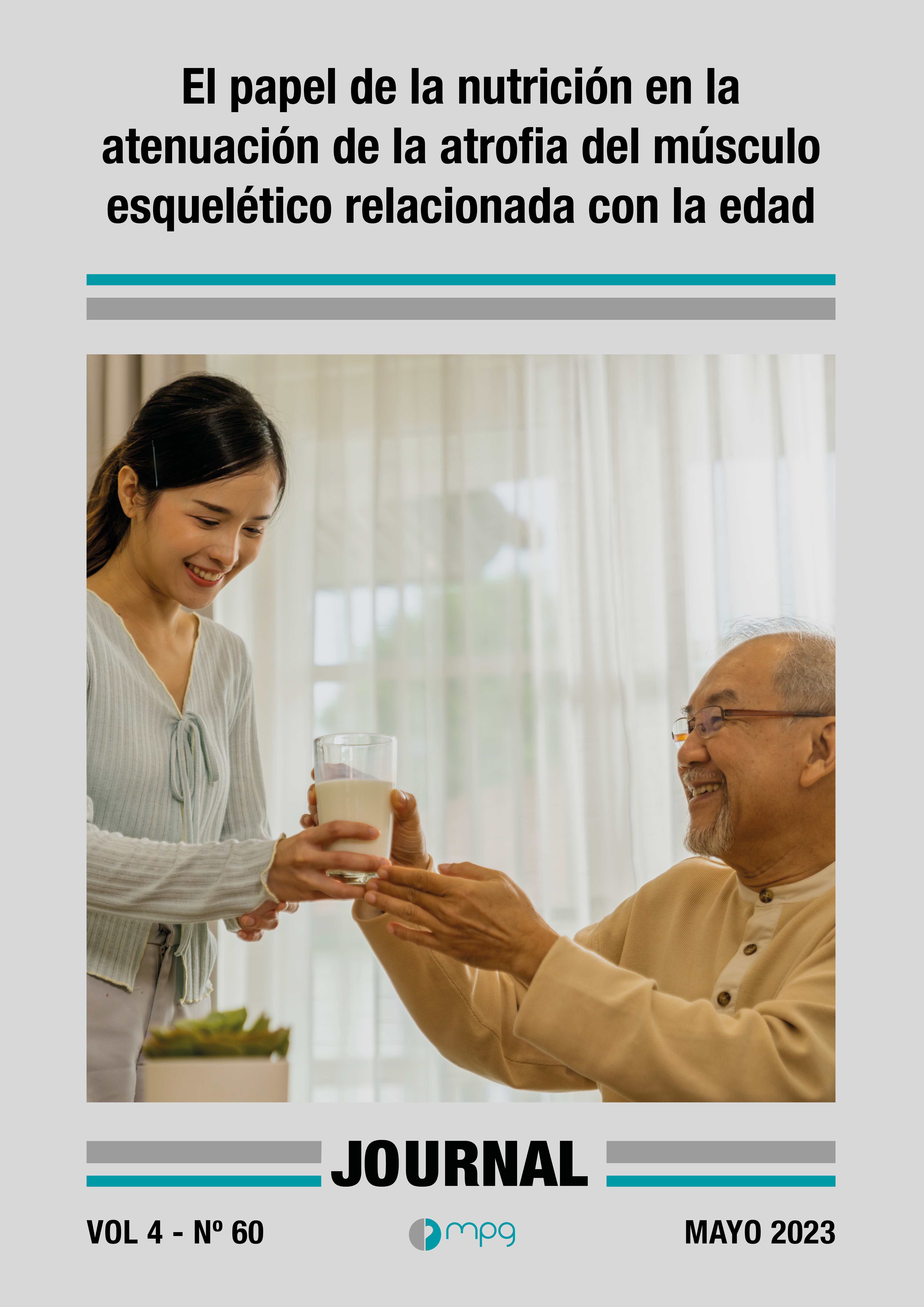3. El papel de la nutrición en la atenuación de la atrofia del músculo esquelético relacionado con la edad
Palabras clave:
Envejecimiento, Dieta, Ejercicio, Atrofia muscular, NutriciónResumen
La población anciana está aumentando rápidamente en todo el mundo y nos enfrentamos al importante desafío de mantener o mejorar la actividad física, la independencia y la calidad de vida. La sarcopenia o disminución de la masa muscular esquelética relacionada con la edad, se caracteriza por la pérdida de la cantidad y la calidad del músculo, lo que da como resultado una ralentización gradual del movimiento, una disminución de la fuerza y la potencia, un riesgo elevado de lesiones relacionadas con caídas y, a menudo, fragilidad. Se han intentado enfoques complementarios, hormonales y farmacológicos para ate-nuar la sarcopenia, pero estos no han logrado resultados sobresalientes. En esta revisión, resumimos el conocimiento actual de las terapias basadas en la nutrición para contrarrestar la sarcopenia.
Elderly population is increasing rapidly worldwide, and we are faced with the significant challenge for maintaining or improving physical activity, independence, and quality of life. Sarcopenia, the age-related decline of skeletal muscle mass, is characterized by loss of muscle quantity and quality resulting in a gradual slowing of movement, a decrease in strength and power, elevated risk of fall-related injury, and often frailty. Supplemental, hormonal, and pharmacological approaches have been attempted to attenu-ate sarcopenia, but these have not achieved outstanding results. In this review, we summarize the current knowledge of nutrition-based therapies for counteracting sarcopenia.
- Recibido: 06 Abril 2023
- Revisión: 11 Abril 2023
- Aceptado: 105 MAyo 2023
Referencias
Vol. 1 N2; págs. 129-133. 2010. Von Haehling S, Morley JE, Anker SD. An overview of sarcopenia: facts and numbers on prevalence and clinical impact. Journal of Cachexia Sarcopenia and Muscle. DOI: https://doi.org/10.1007/s13539-010-0014-2
Vol. 3 N2; págs. 90-101. 2010. Sakuma K, Yamaguchi A. Molecular mechanisms in aging and current strategies to counteract sarcopenia. Current Aging Science. http://dx.doi.org/10.2174/1874609811003020090
Vol. 26 N6; págs. 2509-2521. 2012. McKay BR, Ogborn DI, Bellamy LM, Tarnopolsky MA, Parise G. Myostatin is associated with age-related human muscle stem cell dysfunction. The FASEB Journal. DOI: https://doi.org/10.1096/fj.11-198663
Vol. 45 N2; págs. 138-148. 2010. Wohlgemuth SE, Seo AY, Marzetti E, Lees HA, Leeuwenburgh C. Skeletal muscle autophagy and apoptosis during aging: effects of calorie restriction and life-long exercise. Experi-mental Gerontology. DOI: https://doi.org/10.1016/j.exger.2009.11.002
Vol 59 N9; págs. 1456-1466. 2019. Abiri B, Vafa M. Nutrition and sarcopenia: a review of the evidence of nutri-tional influences. Critical Review in Food, Science and Nutrition. DOI: https://doi.org/10.1080/10408398.2017.1412940
Vol. 535 N1; págs. 301-311. 2001. Esmarck B, Andersen JL, Olsen S, Richter EA, Mizuno M, Kjaer M. Timing of postexercise protein intake is important for muscle hypertrophy with resistance training in elderly humans. The Journal of Physiology. DOI: https://doi.org/10.1111/j.1469-7793.2001.00301.x
Vol 104 N5; págs. 1452-1461. 2008. Drummond MJ, Dreyer HC, Pennings B, Fry CS, Dhanani S, Dillon EL et al. Skeletal muscle protein anabolic response to resistance exercise and essential amino acids is delayed with aging. Journal of Applied Physiology. DOI: https://doi.org/10.1152/japplphysiol.00021.2008
Vol. 295 N4; págs. E921-E928. 2008. Walrand S, Short KR, Bigelow ML, Sweatt AJ, Hutson SM, Nair KS. Func-tional impact of high protein intake on healthy elderly people. American Journal of Physiology, Endocrinology and Metabolism DOI: https://doi.org/10.1152/ajpendo.90536.2008
Vol. 69 N3; págs. 409-438. 1984. Waterlow JC. Protein turnover with special reference to man. Quarterly Journal of Experimental Physiology. DOI: https://doi.org/10.1113/expphysiol.1984.sp002829
Vol. 8 N68. 2011. Breen L, Phillips SM. Skeletal muscle protein metabolism in the elderly: interventions to counteract the “anabolic resistance” of ageing. Nutrition and Metabolism. DOI: https://doi.org/10.1186/1743-7075-8-68




MPG Journal - Política de privacidad